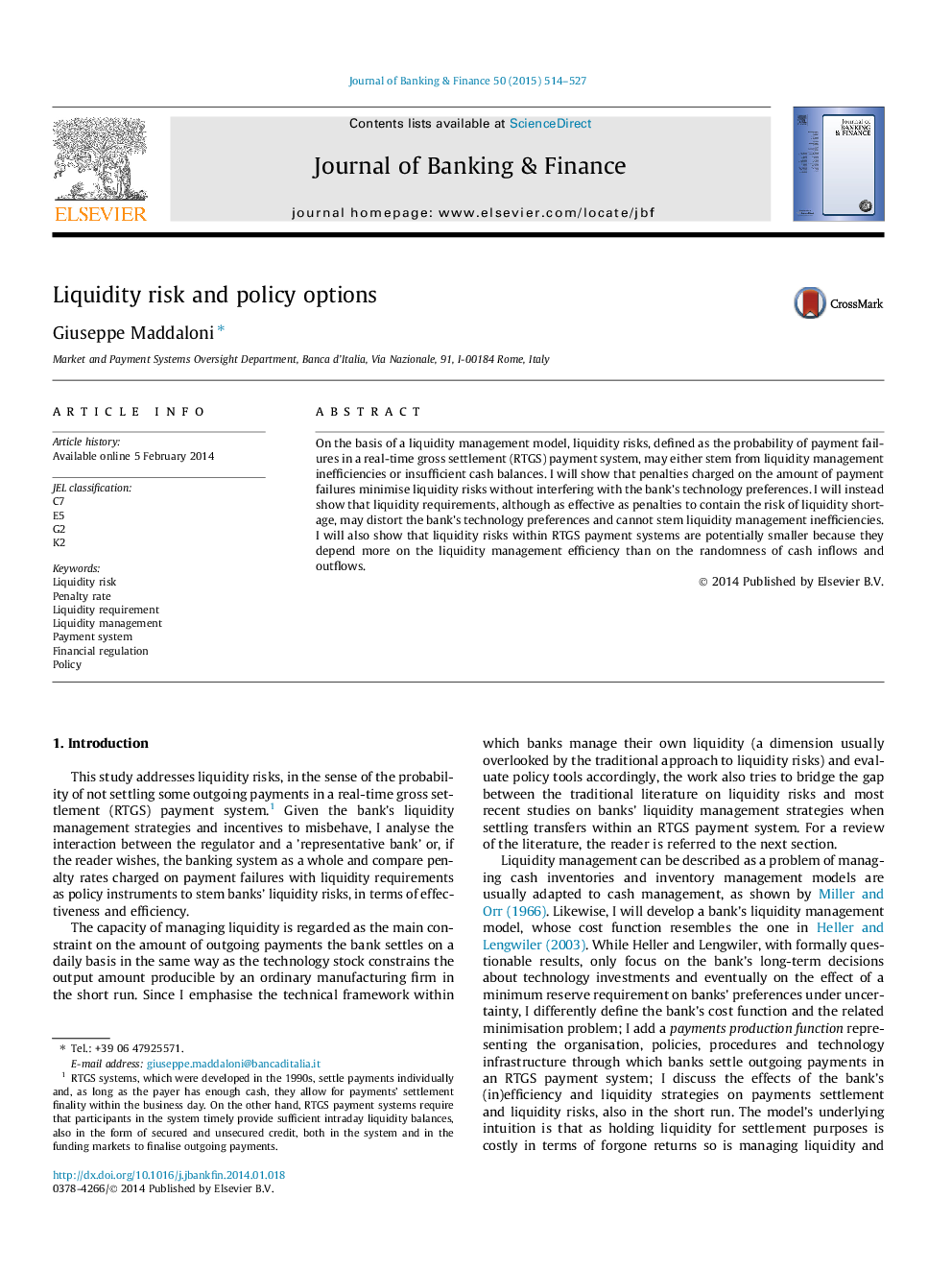| Article ID | Journal | Published Year | Pages | File Type |
|---|---|---|---|---|
| 5088594 | Journal of Banking & Finance | 2015 | 14 Pages |
On the basis of a liquidity management model, liquidity risks, defined as the probability of payment failures in a real-time gross settlement (RTGS) payment system, may either stem from liquidity management inefficiencies or insufficient cash balances. I will show that penalties charged on the amount of payment failures minimise liquidity risks without interfering with the bank's technology preferences. I will instead show that liquidity requirements, although as effective as penalties to contain the risk of liquidity shortage, may distort the bank's technology preferences and cannot stem liquidity management inefficiencies. I will also show that liquidity risks within RTGS payment systems are potentially smaller because they depend more on the liquidity management efficiency than on the randomness of cash inflows and outflows.
